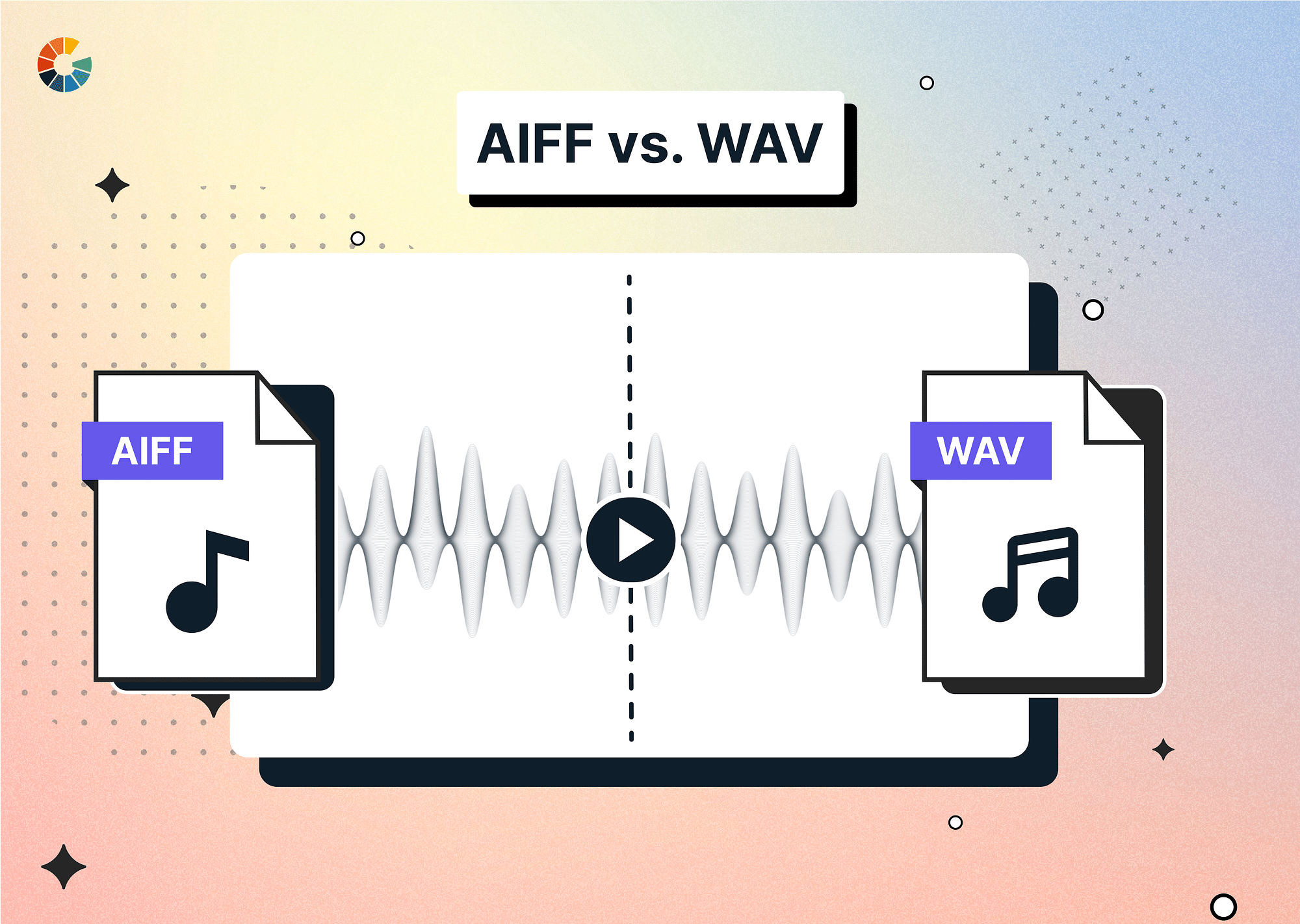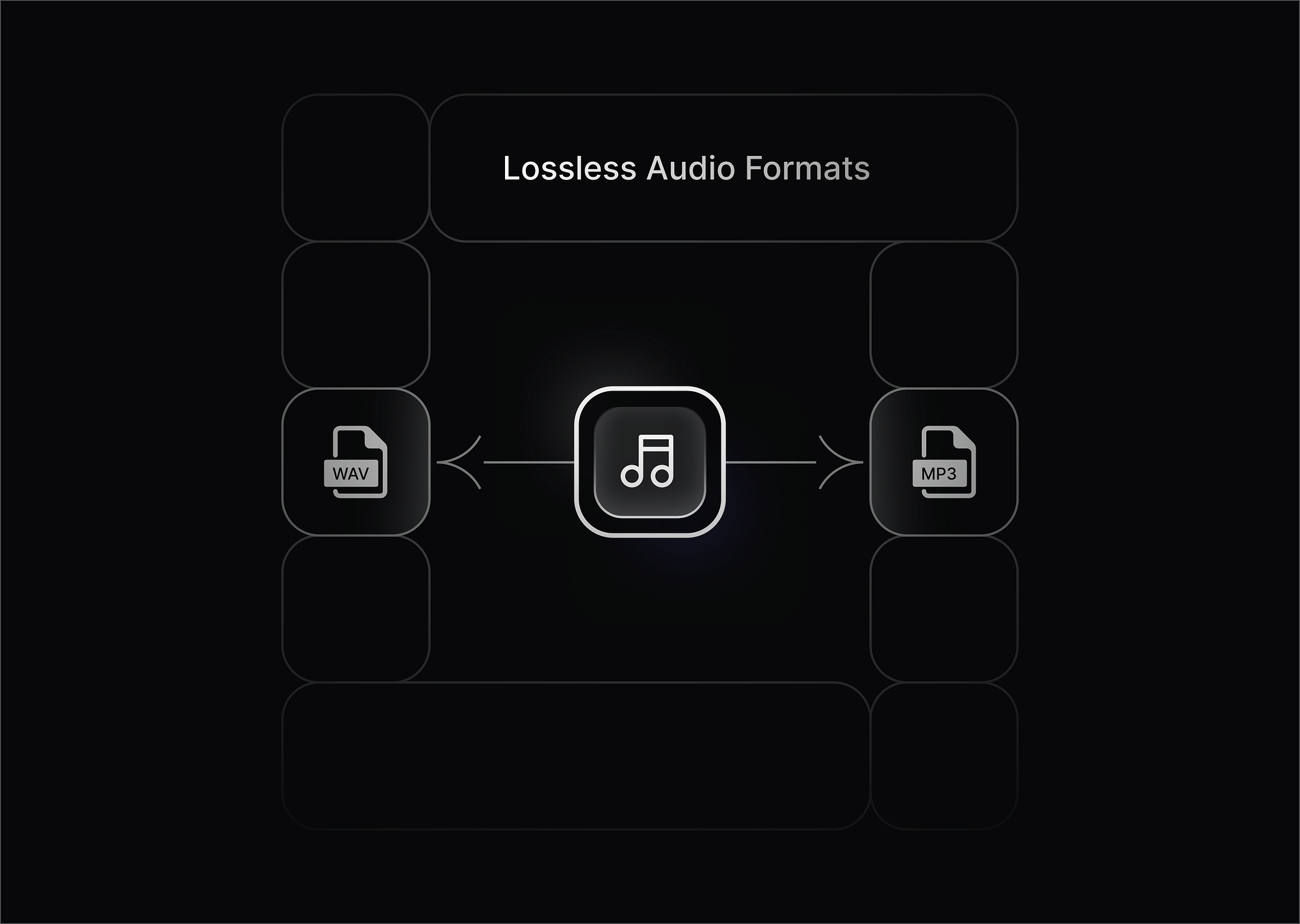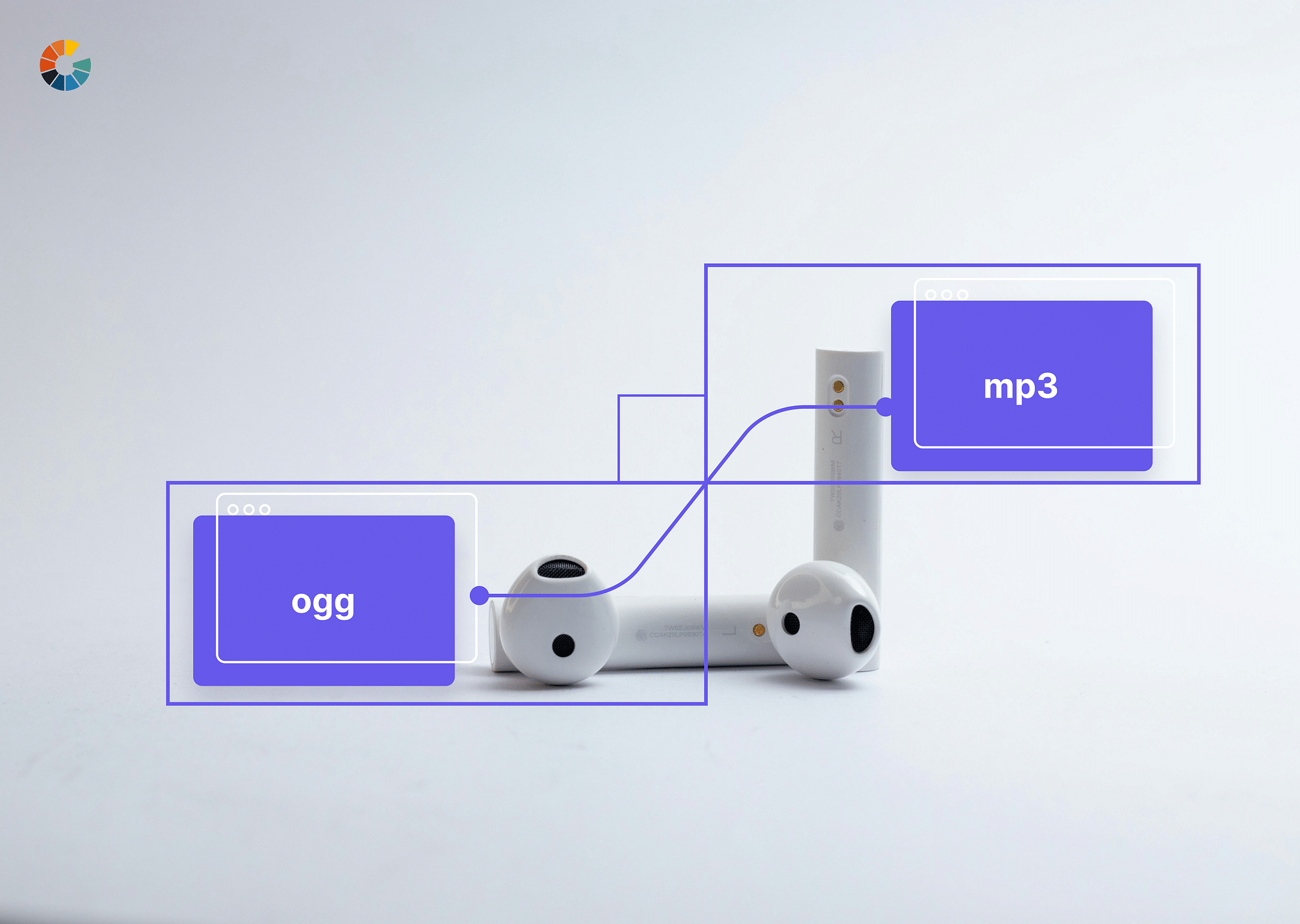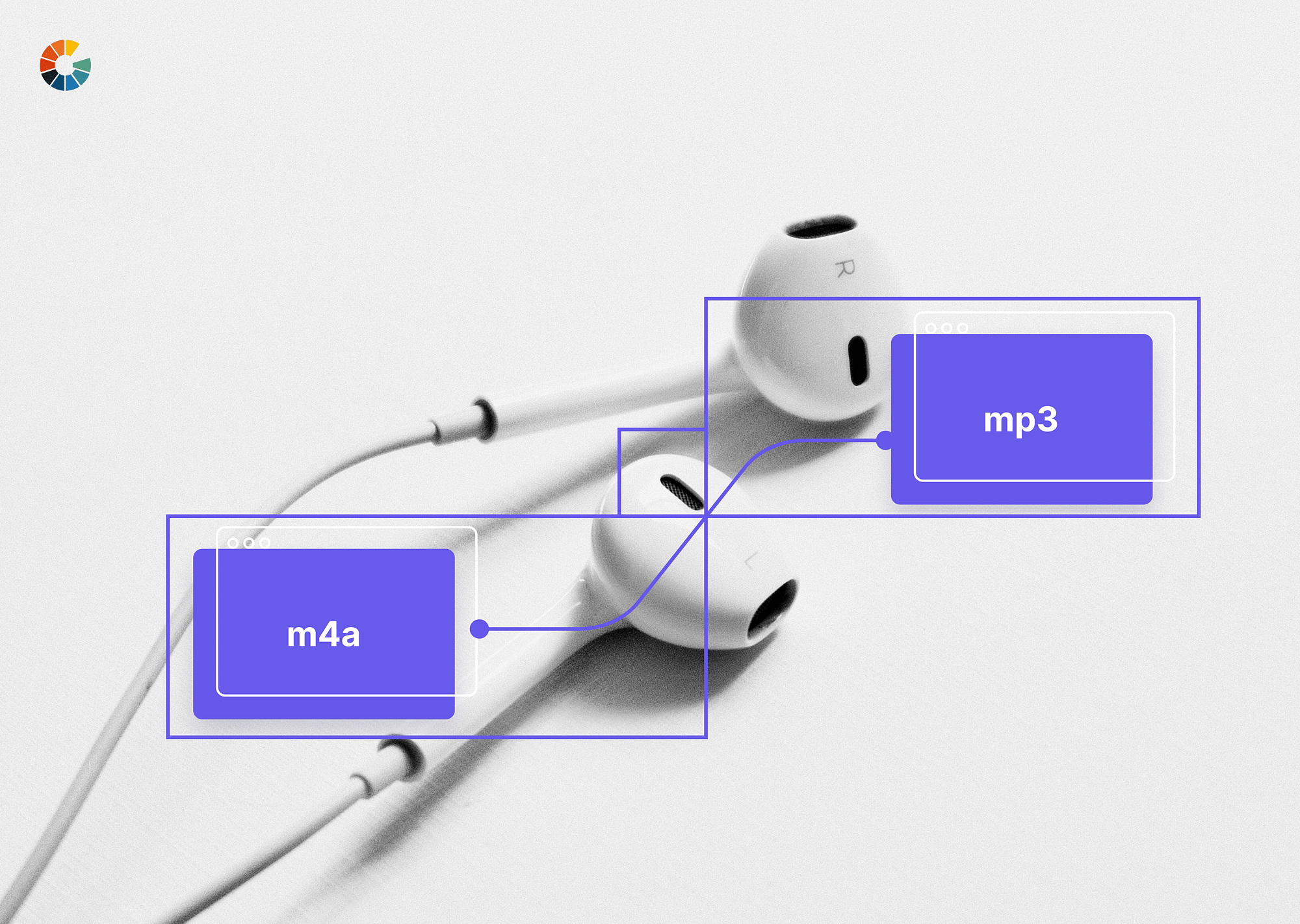When it comes to high-quality audio, choosing the right file format is crucial for both professionals and audiophiles alike. AIFF and WAV are two of the most commonly used lossless audio formats, each offering superb sound quality without any compression losses. This article will delve into the details of both AIFF vs WAV, examining their advantages, drawbacks, and key differences to help you decide which format best suits your audio needs.
What is AIFF?
The Audio Interchange File Format (AIFF) was developed by Apple in 1988, originally as part of its Mac OS system software, with the aim of providing a standard for high-quality audio storage. Based on Electronic Arts’ earlier IFF format used for multimedia, AIFF allowed for the storage of uncompressed audio data, which ensures the sound quality is preserved but results in larger file sizes. This format quickly became popular in professional audio environments due to its high fidelity and compatibility with Apple’s ecosystem.
Pros and cons of AIFF
Here are some pros and cons of the AIF format that you should keep in mind:
Pros:
- High Sound Quality: Since AIFF is a lossless format, it retains the original audio quality, making it ideal for professional editing and music production.
- Wide Software Compatibility: AIFF is supported by most professional audio and video editing software, facilitating easy integration into production workflows.
Cons:
- Large File Size: Uncompressed AIFF files consume a significant amount of storage space, which can be a drawback for users with limited storage.
- Limited Hardware Support: Although widely supported in software, AIFF files are not as universally supported by hardware players compared to more common formats like MP3.
What is WAV?
The Waveform Audio File Format (WAV) was developed jointly by Microsoft and IBM in 1991 as a standard for storing audio on Windows systems. Building on the RIFF (Resource Interchange File Format) structure, WAV allows for the storage of uncompressed audio data, offering high-quality audio reproduction at the cost of large file sizes. Its cross-platform compatibility has made it a staple in both Windows environments and broader audio production applications.
Pros and cons of WAV
Like AIFF, WAV, too, has its set of pros and cons. Here are they:
Pros:
- Universal Compatibility: WAV files are supported by almost every audio playback device and professional audio software, making them extremely versatile.
- Perfect Audio Quality: As with AIFF, the lossless nature of WAV means there is no loss in sound quality, which is crucial for professional applications.
Cons:
- Large File Sizes: Similar to AIFF, the high sound quality comes with the downside of large file sizes.
- No Compression Options: Unlike some other formats, WAV files do not have built-in compression options, which can limit their usefulness in space-constrained scenarios.
AIFF vs WAV: Difference Between AIFF and WAV
To further understand how AIFF and WAV stack up against each other, here is a comparison table highlighting their primary differences:
| Feature | AIFF (Audio Interchange File Format) | WAV (Waveform Audio File Format) |
|---|---|---|
| File Extension | .aiff / .aif | .wav |
| Developed By | Apple | Microsoft and IBM |
| Compression | Uncompressed (lossless) | Uncompressed (lossless) |
| File Size | Larger due to uncompressed nature | Larger due to uncompressed nature |
| Bit Depth | Usually 16-bit or 24-bit | Typically 8-bit, 16-bit, 24-bit, or 32-bit |
| Sound Quality | High-quality audio | High-quality audio |
| Metadata Support | Supports metadata, less robust than newer formats | Supports basic metadata (title, artist, album, etc.) |
| Compatibility | Best on macOS and Apple devices | Highly compatible with Windows and cross-platform |
| Best Use Cases | Audio production, music editing, archiving | Audio production, sound editing, game development |
Let’s understand some points of differences, as mentioned in the table, in a clearer manner.
Compression
AIFF and WAV both typically use uncompressed formats, which preserve audio in its original, lossless quality, resulting in larger file sizes. However, AIFF files are generally uncompressed by default, while WAV has slightly more flexibility with optional compressed variants, allowing for smaller file sizes at the cost of audio fidelity. Both formats prioritize quality over storage efficiency, but WAV's compression options provide a bit more versatility for users who need to balance quality and storage.
Bit Depth
AIFF and WAV differ in their bit depth capabilities, impacting audio quality and editing flexibility. AIFF typically supports 16-bit and 24-bit depths, which deliver high-fidelity audio suited for professional production, though it can occasionally handle higher bit depths depending on the software. WAV, however, is more versatile, supporting 8-bit, 16-bit, 24-bit, and even 32-bit depths. This flexibility makes WAV adaptable for various use cases, from basic audio to advanced professional projects requiring higher dynamic range and resolution.
Compatibility
AIFF is primarily compatible with macOS and Apple devices, while WAV is highly compatible with Windows and various cross-platform systems. This makes WAV a more versatile choice for audio sharing and playback across different devices and operating systems. However, for users primarily working within the Apple ecosystem, AIFF may be a more suitable choice due to its native support and seamless integration with Apple's audio software and hardware.
Metadata Support
AIFF and WAV both support basic metadata but differ in their robustness and typical use cases. AIFF offers limited metadata capabilities, storing essential information but lacking the depth of more modern formats, which can make it less convenient for detailed organization and tagging. WAV, though also limited in metadata support, includes fields like title, artist, and album, which are commonly used in multimedia contexts. However, both formats are often outperformed by newer audio formats (like MP3 or AAC) when extensive metadata support is required for music libraries or media collections.
Use Case
AIFF is most popular among Apple users and is widely used in professional music production, audio editing, and archiving within macOS environments, where it integrates seamlessly. WAV, on the other hand, is the standard in Windows-based audio production and multimedia applications, making it the preferred choice for video game development, broadcast audio, and cross-platform projects where compatibility across operating systems is essential.
Overall, both AIFF and WAV are top choices for high-quality audio applications where lossless audio is crucial. The choice between the two may come down to factors like system ecosystem (Apple vs. Microsoft), specific software being used, or requirements for file metadata handling.
FLAC vs. WAV vs. AIFF
| Feature | FLAC | WAV | AIFF |
|---|---|---|---|
| Lossy/Lossless | Lossless | Lossless | Lossless |
| File Size | Smaller than WAV/AIFF | Larger than FLAC | Larger than FLAC |
| Sound Quality | High | High | High |
| Compatibility | Broad (many players support it) | Universal | Primarily Apple ecosystem, but broadly compatible |
| Platform Preference | Cross-platform | Universal | Mac-focused but cross-platform |
| Editing | Requires decompression for editing | Direct editing supported | Direct editing supported |
MP3 vs WAV vs AIFF
| Feature | MP3 | WAV | AIFF |
|---|---|---|---|
| Compression | Lossy | Uncompressed | Uncompressed |
| File Size | Small to medium | Large | Large |
| Audio Quality | Lower (due to compression) | High (lossless, uncompressed) | High (lossless, uncompressed) |
| Typical Bitrate | 128-320 kbps | 1411 kbps (CD quality) | 1411 kbps (CD quality) |
How to Convert AIFF to WAV or WAV to AIFF?
Converting between AIFF and WAV formats is a common task for audio professionals and enthusiasts alike, especially when working across different operating systems or with various audio software. The conversion process is typically straightforward and can be accomplished with a variety of tools ranging from professional audio software to free online converters.
Steps to Convert AIFF to WAV or WAV to AIFF
Converting AIFF and WAV files is easy and can be done using several tools. Online converters are one option, but you can also use software like VLC Media Player or iTunes for the task. Alternatively, here are the steps to convert between AIFF and WAV formats using Audacity and FFmpeg.
Using Audacity
- Download and Install Audacity: Audacity is a free, open-source audio editing software that supports multiple platforms, including Windows, macOS, and Linux.
- Open Audacity: Launch the program on your computer.
- Import the Audio File: Click on File > Open and select the AIFF or WAV file you wish to convert.
- Convert the File:
- Once the file is loaded, go to File > Export.
- Choose Export as WAV to convert from AIFF to WAV or Export as AIFF to convert from WAV to AIFF.
- In the export window, configure your file settings, such as file name and output location. You can also set quality options and edit metadata if needed.
- Save the File: Click Save, and Audacity will convert the file to the selected format.
Using FFmpeg
- Install FFmpeg and open a Terminal or Command Prompt.
- Navigate to the directory where your AIFF or WAV file is located.
- Use the FFmpeg Command:
- AIFF to WAV
- WAV to AIFF
Converting audio files between AIFF and WAV is generally simple and can be effectively managed with the right tools, allowing you to maintain the quality of your audio across different platforms and applications.
Conclusion
Choosing between AIFF and WAV largely depends on your specific needs, such as compatibility requirements, storage capacity, and intended use. Both formats offer excellent sound quality and are suitable for professional audio work, but WAV's slightly broader device support might give it the edge for general use.
FAQs:
1. Is WAV better than MP3?
Yes, WAV offers significantly better quality than MP3 because it is a lossless format, while MP3 is lossy.
2. How to play AIFF files?
AIFF files can be played on most audio players that support lossless formats, including VLC, iTunes, and QuickTime.
3. Which is the best audio format?
The best audio format depends on the use case: WAV and AIFF are ideal for high-quality, uncompressed audio, while MP3 and AAC are better for compressed files with smaller sizes. For lossless audio, FLAC or ALAC are excellent choices.
4. Do you lose quality with WAV?
No, WAV is a lossless format, so there is no loss in quality when audio is recorded or saved as WAV.
- What is the best alternative to WAV?
The best alternative to WAV is FLAC (Free Lossless Audio Codec), which offers lossless compression, maintaining high audio quality while reducing file size.




